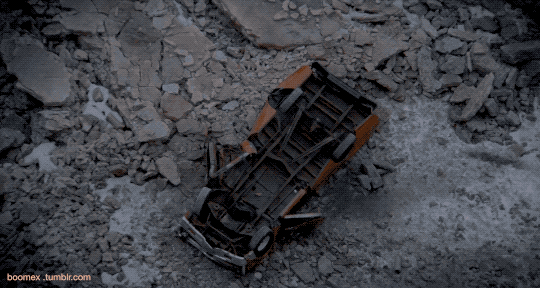When we were discussing the ways in which players choose to “fast forward” or “skip” sections of the loop, I began to think about strategies that players use to exit loops prematurely. Oftentimes, when a player makes a mistake at a particular stage in the loop, they craft a makeshift skip button for themselves by taking actions that trigger the start of the next loop. Depending on the game or film, there are different tactics for the player to restart the loop before the fixed amount of time is up. In 12 Minutes, you can cause the loop to restart by walking out of the door, and in Groundhog Day, viewers see Phil “skip” to the next day when he commits suicide.

This emergent behavior of ending a run early is not exclusive to time loop games. Players often use this tactic when playing platformers; if they make a careless mistake and lose a life early on in their run, they will intentionally use up the rest of their lives so that they can restart the level. These cycle triggers become a mechanic within games that are simultaneously opposed to, and in service of, the game’s objects. For example, to survive and clear a level, the player chooses to die early. The potentially endless number of runs that the player can take allows them to engage in this behavior, which in turn, devalues the significance of each loop.
In the games and films that we analyzed in class, the only game that pointed out to the player the number of loops they had gone through was Save the Date. The other works allowed for the number of runs a player took to fade into oblivion and the player easily became detached from the amount of times they had gone through a loop. One film that was briefly mentioned in class that touches on this theme is The Girl Who Leapt Through Time. Part way through this film, it is revealed that the number of loops the protagonist can experience is actually limited. Through this, the film portrays the consequences of viewing the time loop as an infinite resource.

At the start of the film, when the protagonist was not aware of this limit, she used her ability to go back in time for frivolous reasons, such as to get an extra hour of karaoke. The film’s twist emphasizes how the girl’s perception that she could endlessly loop caused her to warrant going back in time for trivial things. The trigger the girl uses to go back in time, a leap and roll, binds the restart of the loop with a playful, inconsequential action.
The choice to have a leap as the loop trigger in the film seems to aptly parallel how the makeshift restart mechanic is treated by players in games. Players often become desensitized to the actions taken to restart the loop and even extreme choices, like killing the avatar, eventually have an insubstantial emotional impact on the player. Dying is no longer exclusively a fail state, but a mechanism to restart the loop. It simply becomes another tactic in the repertoire, sitting alongside the mechanics of jumping, running, and interacting with objects. The diminishing impact of this choice is intrinsically tied to the player’s belief that the number of runs they can take is not limited.
Works Cited:
“Car Explosion .” Https://Boomex.tumblr.com/Post/157203693410/Be-Car-Explosion.
Hosoda , Mamoru, director. The Girl Who Leapt Through Time. Kadokawa Herald Pictures , 2006.
“Makoto With Number on Arm .” Https://Www.pinterest.com/Pin/733383120562818988/.
Ramis, Harold, et al. Groundhog Day.


This makes me wonder what the difference might be between a player who is trying to get through a game in the least number of resets possible and a player that thinks their resets are limited. Both plays would emphasize resets as a tool and therefore needing to be as resourceful as possible – meaning that every time reset would need to be for a good reason. Is there any difference in this kind of gameplay since the end goal is the same in both: minimize the number of resets? I think both gameplays might end up being very similar.